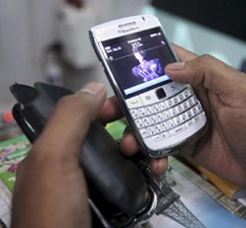
Since its incorporation in 1995, Sify Technologies has altered its business model several times in order to adapt to the technological advancements in the information and communications technology space. Over the years, the company has evolved from being a pure-play internet service provider (ISP) to an infrastructure service provider to a software service provider. At present, the company is implementing Phase III (Sify 3.0) of its business strategy, under which it intends to shift its focus from infrastructure to software solutions. Sify also plans to expand its footprint globally.
The company commenced operations in India as an ISP and launched an online portal during the internet boom in the late 1990s. Unlike other internet portals, Sify survived the dot-com bubble burst and continued to expand its operations across the country. The company successfully listed its shares on NASDAQ in 1999-2000 and raised about $220 million through two successive public offerings in the US.
Initially, the company’s business structure was aligned towards consumers, and the consumer segment and cybercafes contributed 45 per cent to the revenues, the enterprise segment 40 per cent and international operations 5 per cent. The company aggressively expanded its iWay chain of internet cafes across the country, with the number of these facilities increasing from 40 in 2000 to over 1,300 in 2004 through a mix of franchisees and self-owned cafes. A factor that helped strengthen the iWay cybercafe model was the revenue sharing agreement of 70:30 with the franchisees, thus enabling them to recover investments in infrastructure in a short time frame. The iWay cybercafes gained popularity due to their ability to provide high speed internet access at a low price of Rs 20 per hour. However, with more ISPs offering last mile connectivity and as the penetration of PCs and laptops increased, the demand for cybercafes started declining.
Over time, Sify’s cybercafe business also faced challenges. This forced it to revamp operations and cater to the demand of higher-revenue customers – the enterprise segment – thus shifting its focus from the consumer business segment. The company launched several connectivity, hosting, voice, and security products and solutions for enterprise customers. It established itself as an integrated end-to-end infrastructure service provider. As a result, the contribution of the enterprise segment to the total revenues increased from 57 per cent in 2008 to 70 per cent in 2009 and 91 per cent in 2012. Meanwhile, the share of the consumer business dropped from 21 per cent in 2008 to 6 per cent in 2012. With improving revenues from the enterprise segment, Sify stemmed the slide in profits resulting from a slowdown in the consumer business. The company also established five data centres which offered hosting and disaster recovery solutions to its customers. Investments in data centres and enterprise solutions enabled Sify to win long-term contracts from both private and public entities.
Meanwhile, Sify rebranded the iWay cybercafes as e-Port cafes which offer e-commerce services such as e-ticketing, money transfer and bill payments. The company had about 377 operational e-Port facilities in 2011-12. It also launched Sify mylife, a cloud services model targeting cybercafes and offering products such as Sify Talk, which offer facilities like ISD calling, online test centres and online advertising.
In the cloud computing market, taking cognisance of SMEs’ need to reduce costs and outsource IT operations, Sify launched cloudinfinit services, which allow customers to choose from a variety of solutions across analytics, networks, storage, computing and security. The company also started offering desktop-as-a-service, IP surveillance and cloud disaster recovery.
In 2012, to further diversify its product portfolio, Sify set up an undersea cable landing station in Mumbai, which can accommodate four cable systems. The Rs 400 million-Rs 500 million facility was established to meet the requirements of growing data traffic and upgraded cable systems. The company also invested in the Europe India Gateway cable system, which would enable it to provide high bandwidth to customers.
While there are several business opportunities for the company in the IT and software service segments, Sify is likely to face competition from broadband wireless access spectrum holders in the internet services market. 4G players such as Reliance Jio Infocomm are likely to launch wireless broadband services in the near future, which would serve as an excellent alternative to fixed line internet services. Meanwhile, in the data centre market, Sify is competing with international and domestic IT companies like IBM, Tata Consultancy Services and Dell.
Moreover, the decision to bring ISPs under the unified licence regime will increase the annual licence fee from 6 per cent to 8 per cent. This could affect Sify’s margins in the consumer business which is already under pressure due to competition from ISPs such as Bharat Sanchar Nigam Limited, Bharti Airtel and Reliance Communications.
Going forward, Sify will continue to strengthen its products and solutions for enterprise customers and leverage its expertise in delivering services to expand its global presence under Sify 3.0.